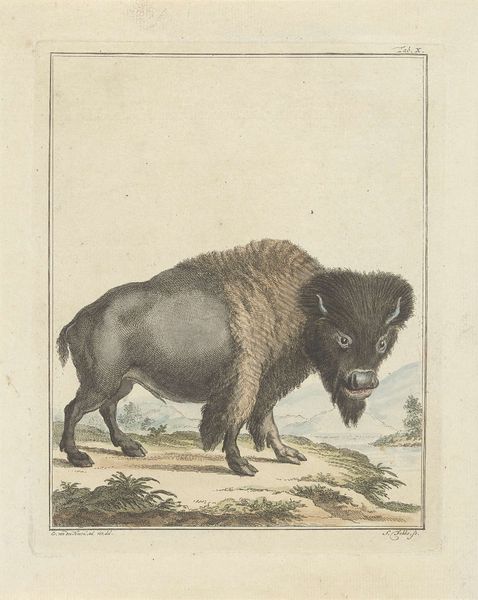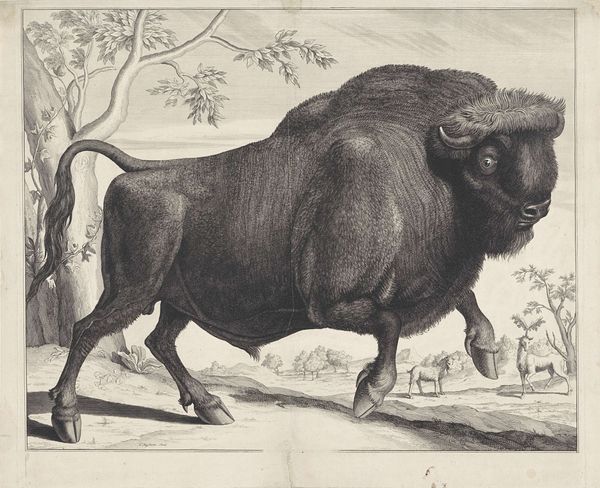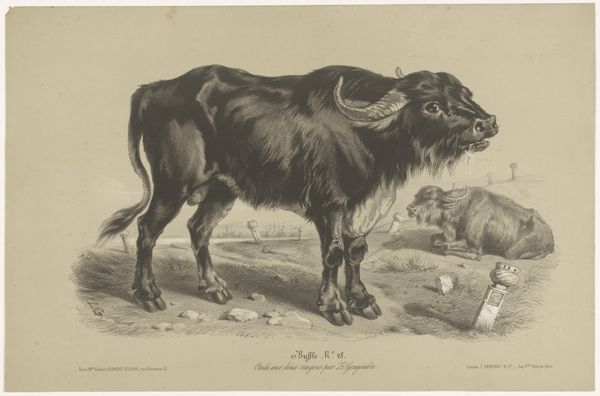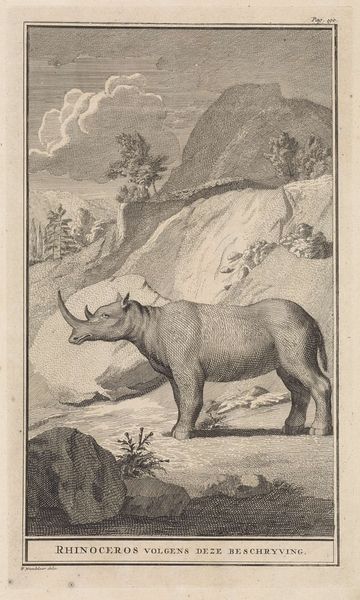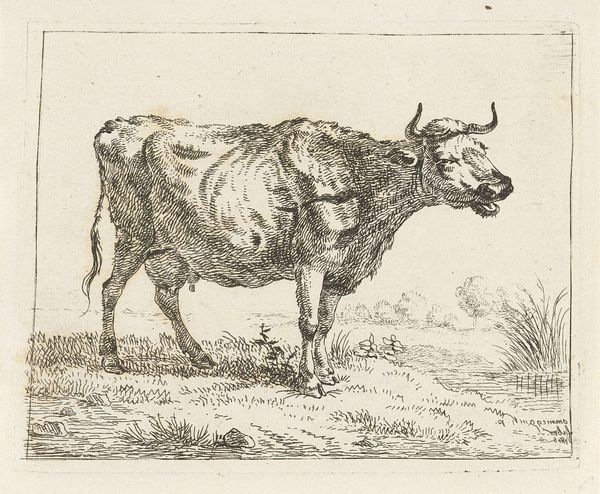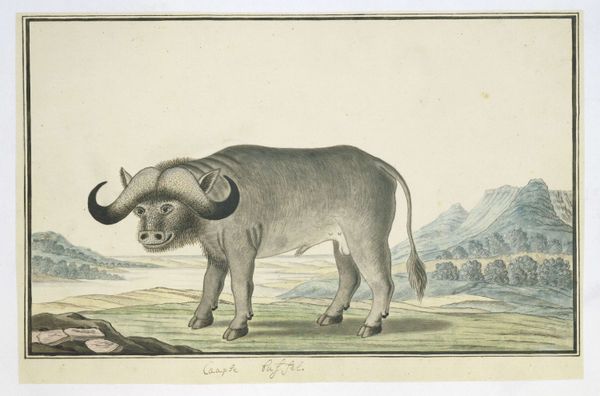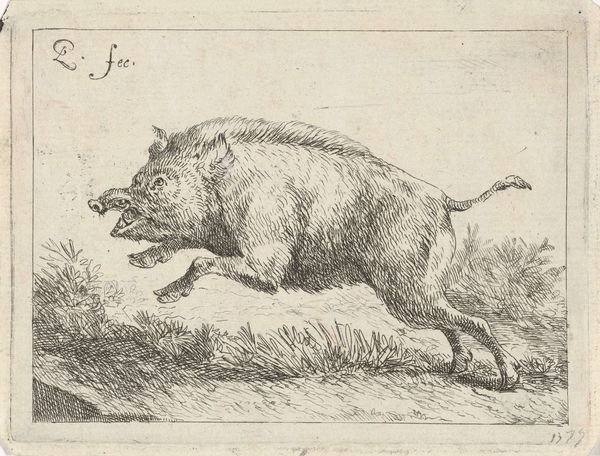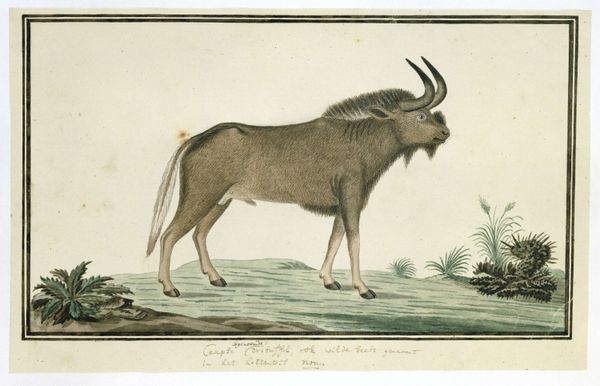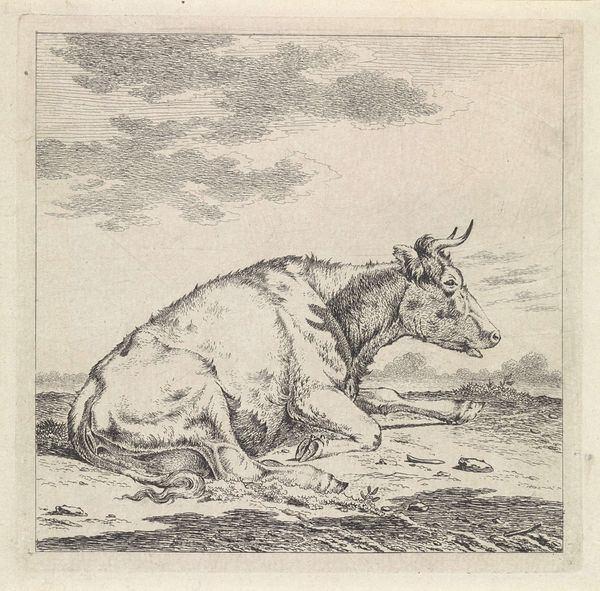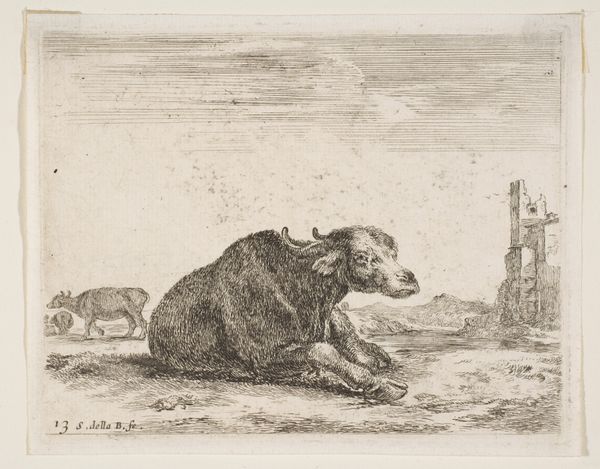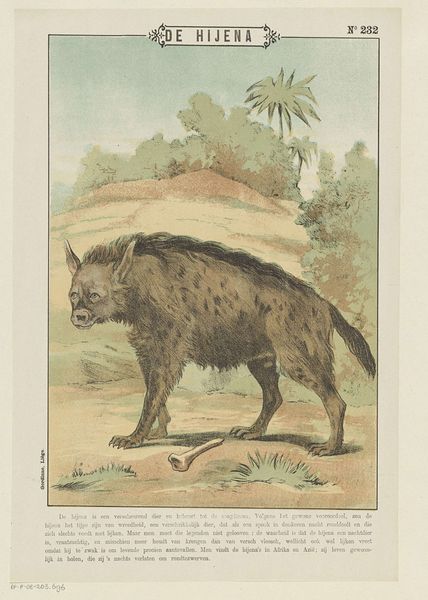
drawing, paper, pen
#
pencil drawn
#
drawing
#
aged paper
#
toned paper
#
light pencil work
#
animal
#
dutch-golden-age
#
pencil sketch
#
sketch book
#
landscape
#
paper
#
personal sketchbook
#
sketchbook drawing
#
pen
#
pencil work
#
genre-painting
#
sketchbook art
#
realism
Dimensions: height 214 mm, width 161 mm
Copyright: Rijks Museum: Open Domain
Curator: Here we have "Afrikaans Boszwijn" a pen and pencil drawing from between 1722 and 1784, courtesy of Simon Fokke and held in the Rijksmuseum. Editor: My initial impression? It's strangely charming. There's a directness to it, the kind you get from observing a creature in its own space, rendered on what appears to be aged paper. The light pencil work gives it an airy, almost whimsical feel, despite depicting such a robust animal. Curator: It’s true. There's a simple clarity to the image that’s deceptive; a closer inspection reveals a remarkable understanding of anatomy and a tangible curiosity about this African wild boar. Fokke’s light touch belies the labor and skill needed for precise rendering. Editor: Labor absolutely, but also the context of that labor is crucial. Think about where this sketch comes from; the Dutch Golden Age, fueled by colonial expansion and trade. Animals, especially exotic ones, were commodities to be categorized, consumed visually, and scientifically “understood”. This drawing is a part of that system. Curator: Yet, there's an undeniable appreciation evident, at least to my eye. I find it more evocative than just a scientific study. There’s also an engagement with the landscape itself - look at how the artist has detailed the cloudy sky or hilly backdrop to add drama and spatial depth to the image. There's this subtle interplay of light and shadow which brings out so much dimension. It creates an otherworldly impression. Editor: Perhaps. But consider the availability and circulation of such images at the time. This wouldn’t have been widely accessible, more likely bound in a volume for a wealthy collector’s perusal. That context informs the reading too, don’t you think? The rarity of materials and artistry as status symbols is something we cannot dismiss. Curator: A valuable reminder to consider the full picture! Thinking about its current location within the Rijksmuseum alongside works by Rembrandt is a reminder of that full picture too, no? Ultimately it allows us to continue appreciating a range of things that it has on offer, beyond wealth and ownership. Editor: Indeed, analyzing both the intimate artistry and the broader societal forces allows a far richer interpretation than either perspective alone. A final thought, though: what happens to this image's value, now it lives digitally in our pockets? A shift that even Fokke probably couldn't imagine!
Comments
No comments
Be the first to comment and join the conversation on the ultimate creative platform.
